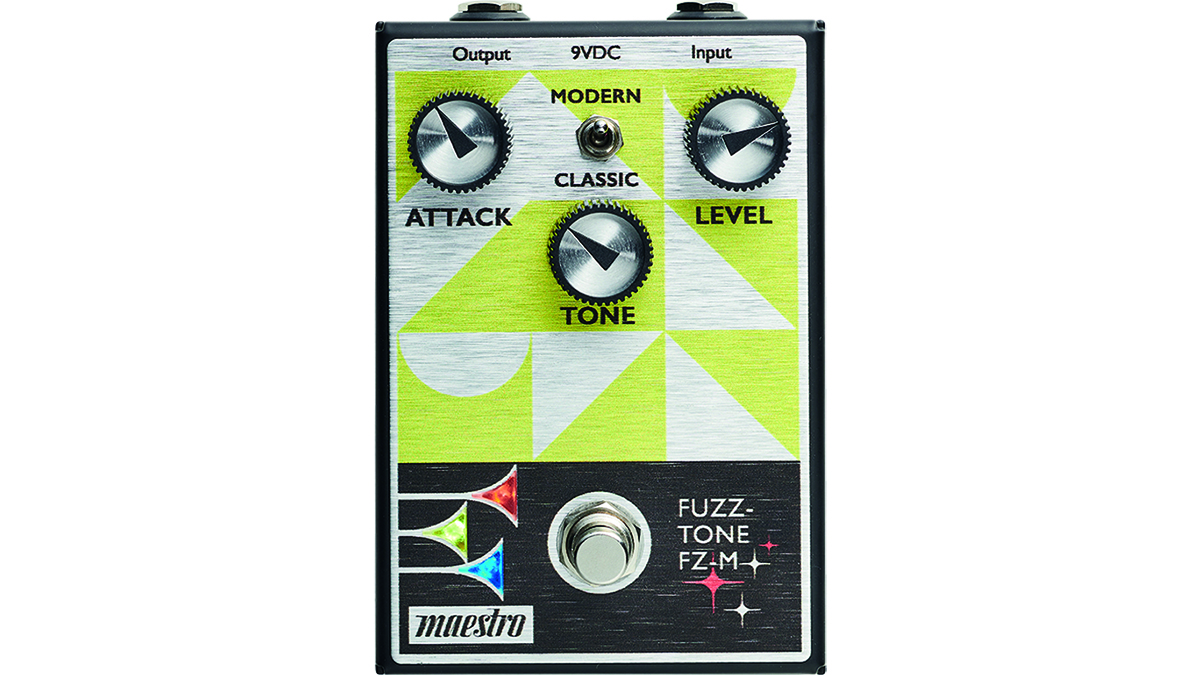
Imagine a world before YouTube effects pedal demos? It's hard, we know. Gibson Electonic's 1962 showcase for the FZ-1 fuzz, and arguably the world's first pedal, came on a vinyl record and showed off its 'tuba sounds' amongst other capabilities. It's surely the first-ever distributed pedal demo. Talk about trailblazing!
And there are multiple audio examples on the record you can hear above to prove just how versatile this fuzz pedal was. Bear with it because after the spoken word introduction we get brass tones, full-on fuzztone, and the "sweet and sentimental" simulations of a cello and alto sax (they're reaching a bit with the former but it is 1962).
What's clear is they're marketing this thing like a synth with specific applications, two years before Bob Moog and Herb Deutsch started to change the course of music history.
Those brass sound demos were enough to get enough people talking for Keith Richards to catch wind of this new pedal technology; he used the FZ-1 for temporary sax tones on the Rolling Stones' demo for (I Can't Get No) Satisfaction, ended up keeping it in and starting a chain reaction for fuzz tones that's still dirtying up music today.
But the first fuzz tone on record wasn't actually Keef or the FZ-1; it was Nashville session man and rockabilly cult hero Grady Martin with a faulty recording console in 1961. During a recording session for Marty Robbins on the song Don't Worry, Martin was using his baritone guitar through the studio's console with tube amplifiers in. The transformer for the preamps was faulty and during Martin's recording with it caused a fuzz sound for his baritone guitar track.
After listening back and reflecting on what was initially thought to be an unusable track, they decided to keep it as it was and you can hear the results below (Martin's low-end fuzzy lead line comes in at 1:25). Don't Worry went to number one on the charts for ten weeks, proving there might just be something in this fuzz thing.
Meanwhile the FZ-1's story is far from over. Gibson revived the Maestro brand in 2022 and the pedal was reissued for a new generation as the FZ-M with classic and modern modes.
Want all the hottest music and gear news, reviews, deals, features and more, direct to your inbox? Sign up here.
You can also find out more about the pedal's role in rock history with this cool timeline over on maestroelectyronics.com.

The spirit of '62 continues to echo through generations of players to this day – long may it prosper!

Rob is the Reviews Editor for GuitarWorld.com and MusicRadar guitars, so spends most of his waking hours (and beyond) thinking about and trying the latest gear while making sure our reviews team is giving you thorough and honest tests of it. He's worked for guitar mags and sites as a writer and editor for nearly 20 years but still winces at the thought of restringing anything with a Floyd Rose.